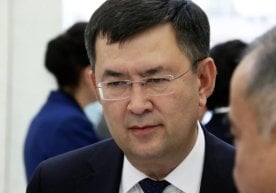
Uzbekistan's labor market has demonstrated one of the best outcomes in Central Asia. Over the past three years, more than 723,000 new jobs have been created in the country, leading to a 4.1 percentage-point decrease in the unemployment rate.
Wages in dollar terms have increased by 39%. However, according to the agency "Expert RA," the economy still struggles to fully accommodate the growth of the working-age population and remains heavily dependent on remittances from labor migrants.
Between 2022 and 2024, the majority of new jobs were concentrated in the service sector. Specifically, approximately 900,000 jobs were created in the "other services" category, 100,000 in education, and 44,000 in healthcare.
At the same time, over 300,000 jobs were cut in agriculture, industry, and the transport-logistics sectors. "Uzbekistan's economy is transitioning from an agriculture-based structure to a service-oriented system.
However, this process is not yet accompanied by a comprehensive growth in formal employment," the agency's research highlighted. On average, monthly wages in dollar terms increased by 39%.
The highest income levels were recorded in the financial sector, with an average of $1,265, followed by IT and communications at $1,151. The sectors leading in growth rates included real estate operations (+19.2% annually), IT (+18.3%), and transport-logistics (+13.5%).
Uzbekistan was the leading country in Central Asia in reducing the unemployment rate, which dropped by 4.1 percentage points over three years. However, the coefficient of converting population growth into labor force growth was only 0.14.
Only one out of every ten new working-age citizens finds formal employment. The disparity in economic activity between men and women is 33.9 percentage points, one of the highest rates in the region.
In 2024, remittances sent by migrants accounted for 14.4% of Uzbekistan's GDP, with 77% of those funds coming from Russia. Despite the volume of these remittances increasing by 68% over two years, the slowing of Russia's economy and changes in migration legislation have raised risks of a potential decline in these incomes.
The government is implementing extensive measures to formalize the labor market and create new opportunities. However, despite improvements in labor market indicators, structural issues remain.
Employment growth lags behind demographic growth, the share of informal employment remains high, and the economy continues to depend on external labor markets. "The main challenge for Uzbekistan is to convert its demographic dividend into a source of domestic growth.
This requires not only job creation but the development of jobs with high added value," the "Expert RA" report noted.
Users of Меҳмон are not allowed to comment this publication.













